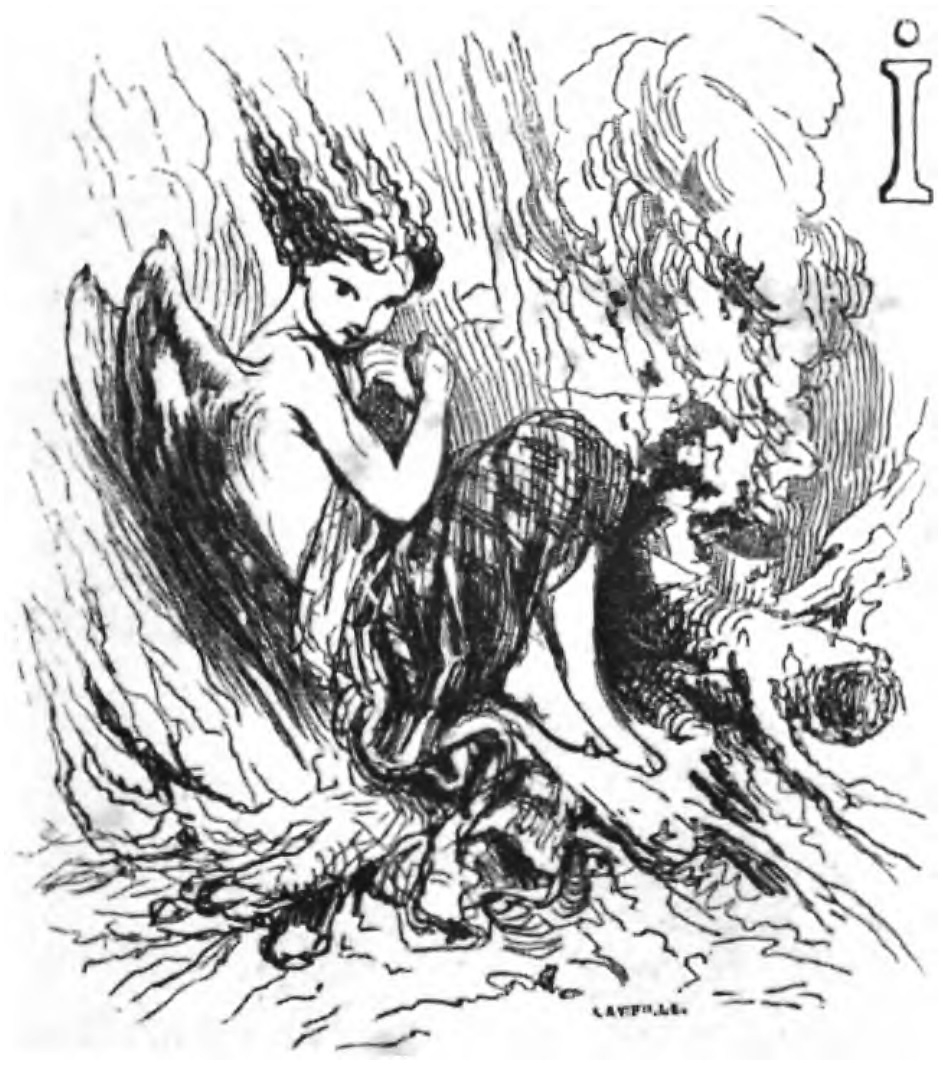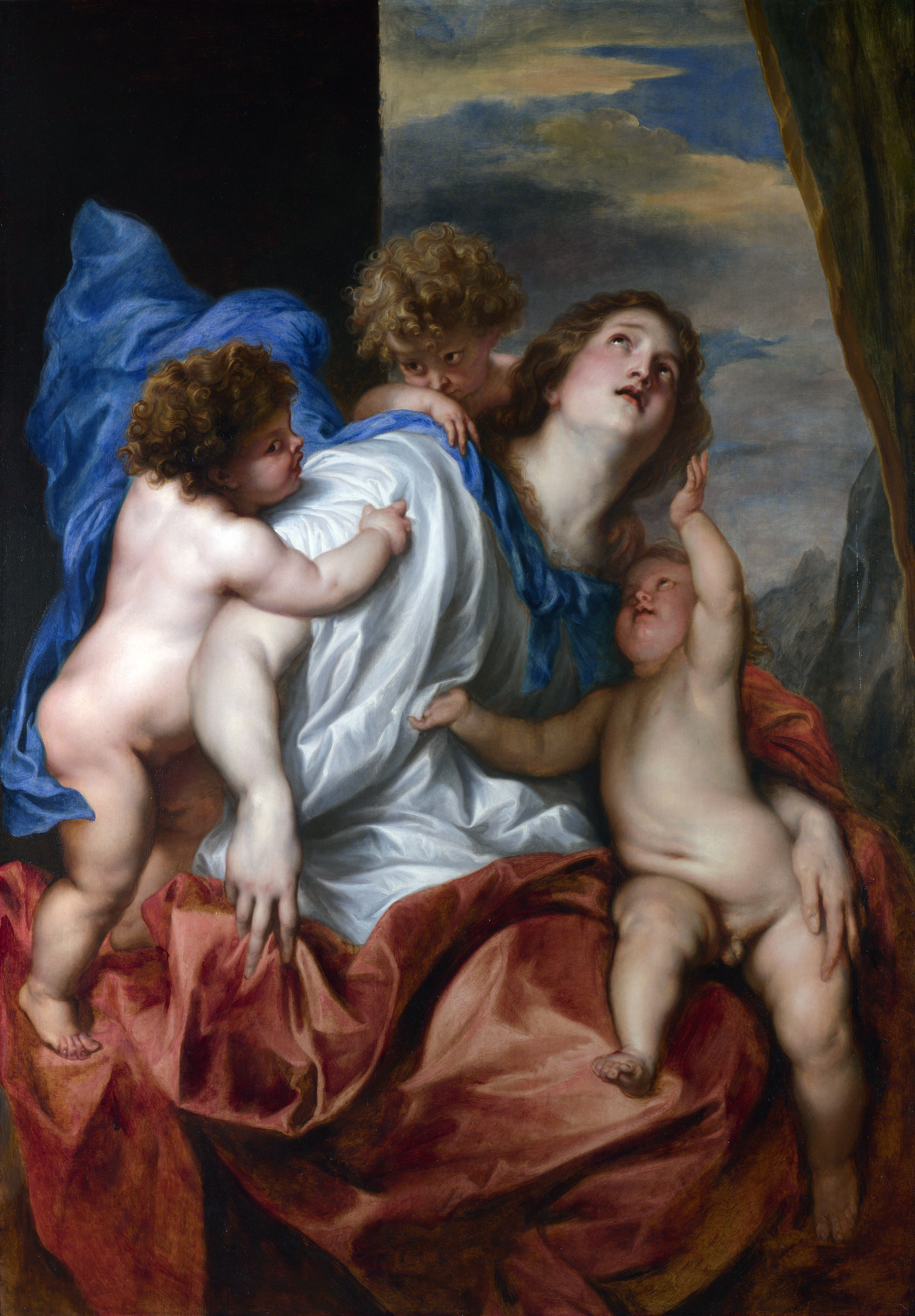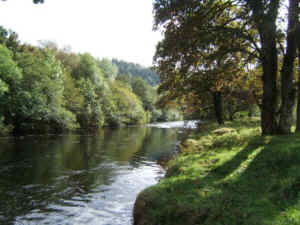|
Trilby, Ou Le Lutin D'Argail
''Trilby; or, The Fairy of Argyll'' (french: Trilby, ou le lutin d’Argail) is an 1822 literary fairy tale novella by French author Charles Nodier (1780–1844). In it, a Scottish household spirit falls in love with the married woman of the house, who at first has him banished, then misses him, and eventually returns his love, both of them dying at the end. It was a popular work of the Romantic movement, published in multiple editions and translations. It also gave birth to adaptations as multiple ballets, including ''La Sylphide'', and ''Trilby'', and the opera ''The Mountain Sylph'', some of which only retained the basic idea of love between a fairy and a Scottish peasant, but otherwise greatly diverged from the original plot. Plot Trilby is a Scottish household spirit living in the hearth of Dougal the fisherman and his boatwoman wife Jeanie. Trilby alternates between taking care of the cottage and boats and playing tricks. He is in love with Jeanie, but only appears wh ... [...More Info...] [...Related Items...] OR: [Wikipedia] [Google] [Baidu] |
Trilby Initial I
A trilby is a narrow-brimmed type of hat. The trilby was once viewed as the rich man's favored hat; it is sometimes called the "brown trilby" in UK, BritainBernhard Roetzel, Roetzel, Bernhard (1999). ''Gentleman's Guide to Grooming and Style''. Barnes & Noble. and was frequently seen at the horse races. The traditional London hat company James Lock & Co., Lock and Co. describes the trilby as having a "shorter brim which is angled down at the front and slightly turned up at the back" compared to the fedora's "wider brim which is more level". The trilby also has a slightly shorter crown than a typical fedora design. History The hat's name derives from Trilby (play), the stage adaptation of George du Maurier's 1894 novel ''Trilby (novel), Trilby''. A hat of this style was worn in the first London production of the play, and promptly came to be called "a ''Trilby'' hat". Its shape somewhat resembles the Tyrolean hat. Traditionally it was made from rabbit hair felt, but now is ... [...More Info...] [...Related Items...] OR: [Wikipedia] [Google] [Baidu] |
Charity (Christian Virtue)
In Christian theology, charity (Latin: ''caritas'') is considered one of the seven virtues and is understood by Thomas Aquinas as "the friendship of man for God", which "unites us to God". He holds it as "the most excellent of the virtues". Further, Aquinas holds that "the habit of charity extends not only to the love of God, but also to the love of our neighbor". The Catechism of the Catholic Church defines "charity" as "the theological virtue by which we love God above all things for His own sake, and our neighbor as ourselves for the love of God". Caritas: the altruistic love The phrase ''Deus caritas est'' from —or ''Θεὸς ἀγάπη ἐστίν'' (Theos agapē estin) in the original Greek is translated in the King James Version as: "God is love", and in the Douay-Rheims bible as: "God is charity" (). Thomas Aquinas does not simply equate charity with "love", which he holds as a passion, not a virtue. The King James Version uses both the words ''charity'' and '' ... [...More Info...] [...Related Items...] OR: [Wikipedia] [Google] [Baidu] |
Ballets
Ballet () is a type of performance dance that originated during the Italian Renaissance in the fifteenth century and later developed into a concert dance form in France and Russia. It has since become a widespread and highly technical form of dance with its own vocabulary. Ballet has been influential globally and has defined the foundational techniques which are used in many other dance genres and cultures. Various schools around the world have incorporated their own cultures. As a result, ballet has evolved in distinct ways. A ''ballet'' as a unified work comprises the choreography and music for a ballet production. Ballets are choreographed and performed by trained ballet dancers. Traditional classical ballets are usually performed with classical music accompaniment and use elaborate costumes and staging, whereas modern ballets are often performed in simple costumes and without elaborate sets or scenery. Etymology Ballet is a French word which had its origin in Italian ... [...More Info...] [...Related Items...] OR: [Wikipedia] [Google] [Baidu] |
Elegiac
The adjective ''elegiac'' has two possible meanings. First, it can refer to something of, relating to, or involving, an elegy or something that expresses similar mournfulness or sorrow. Second, it can refer more specifically to poetry composed in the form of elegiac couplets. An elegiac couplet consists of one line of poetry in dactylic hexameter followed by a line in dactylic pentameter. Because dactylic hexameter is used throughout epic poetry, and because the elegiac form was always considered "lower style" than epic, elegists, or poets who wrote elegies, frequently wrote with epic poetry in mind and positioned themselves in relation to epic. Classical poets The first examples of elegiac poetry in writing come from classical Greece. The form dates back nearly as early as epic, with such authors as Archilocus and Simonides of Ceos from early in the history of Greece. The first great elegiac poet of the Hellenistic period was Philitas of Cos: Augustan poets identified his name ... [...More Info...] [...Related Items...] OR: [Wikipedia] [Google] [Baidu] |
Odes Et Ballades
''Odes et Ballades'', published in 1828, is the most complete version of a collection of poems by Victor Hugo written and published between 1822 and 1828. It includes five books of odes and one book of ballads. They are among his very earliest works, and reflect the Catholic royalist views of his early twenties. He would write seven different prefaces for it, dated 1822, 1823, 1824, 1826, 1828, followed by one in 1853, at which time he was in self-imposed exile, and a final one in 1880. Hugo expresses a view of the difference between "order" and "regularity" which elevates the former on the basis that an irregularity in art can have its own logic, or order, and achieve effects impossible to regularity, or classical evenness. The version of 1826 received a generally positive review from the 22-year-old Sainte-Beuve in the ''Globe'' (January 1827), and this review resulted in their friendship. The collection includes ''Ode à la Colonne de la Place Vendôme'', a response to the Aus ... [...More Info...] [...Related Items...] OR: [Wikipedia] [Google] [Baidu] |
Victor Hugo
Victor-Marie Hugo (; 26 February 1802 – 22 May 1885) was a French Romantic writer and politician. During a literary career that spanned more than sixty years, he wrote in a variety of genres and forms. He is considered to be one of the greatest French writers of all time. His most famous works are the novels ''The Hunchback of Notre-Dame'' (1831) and ''Les Misérables'' (1862). In France, Hugo is renowned for his poetry collections, such as (''The Contemplations'') and (''The Legend of the Ages''). Hugo was at the forefront of the Romanticism, Romantic literary movement with his play ''Cromwell (play), Cromwell'' and drama ''Hernani (drama), Hernani''. Many of his works have inspired music, both during his lifetime and after his death, including the opera ''Rigoletto'' and the musicals ''Les Misérables (musical), Les Misérables'' and ''Notre-Dame de Paris (musical), Notre-Dame de Paris''. He produced more than 4,000 drawings in his lifetime, and campaigned for social cau ... [...More Info...] [...Related Items...] OR: [Wikipedia] [Google] [Baidu] |
Charles Augustin Sainte-Beuve
Charles Augustin Sainte-Beuve (; 23 December 1804 – 13 October 1869) was a French literary critic. Early life He was born in Boulogne, educated there, and studied medicine at the Collège Charlemagne in Paris (1824–27). In 1828, he served in the St Louis Hospital. Beginning in 1824, he contributed literary articles, the ''Premier lundis'' of his collected ''Works'', to the newspaper ''Globe'', and in 1827 he came, by a review of Victor Hugo's ''Odes et Ballades'', into close association with Hugo and the Cénacle, the literary circle that strove to define the ideas of the rising Romanticism and struggle against classical formalism. Sainte-Beuve became friendly with Hugo after publishing a favourable review of the author's work but later had an affair with Hugo's wife, Adèle Foucher, which resulted in their estrangement. Curiously, when Sainte-Beuve was made a member of the French Academy in 1845, the ceremonial duty of giving the reception speech fell upon Hugo. ... [...More Info...] [...Related Items...] OR: [Wikipedia] [Google] [Baidu] |
River Balvaig
The River Balvaig (Scottish Gaelic: "Abhainn Balbhaig") is a short river, approximately long, draining from the head of Loch Voil near Balquhidder in Scotland and then passing southwards through the village of Strathyre before flowing into the northern end of Loch Lubnaig Loch Lubnaig (Loch Lùbnaig in Gaelic) is a small freshwater loch near Callander in the Stirling council area, Scottish Highlands. It lies in the former county of Perthshire. It is part of the Loch Lomond and The Trossachs National Park. Th .... Rivers of Stirling (council area) 2Balvag {{Scotland-river-stub ... [...More Info...] [...Related Items...] OR: [Wikipedia] [Google] [Baidu] |
Argyll
Argyll (; archaically Argyle, in modern Gaelic, ), sometimes called Argyllshire, is a historic county and registration county of western Scotland. Argyll is of ancient origin, and corresponds to most of the part of the ancient kingdom of on Great Britain. Argyll was also a medieval bishopric with its cathedral at Lismore, as well as an early modern earldom and dukedom, the Dukedom of Argyll. It borders Inverness-shire to the north, Perthshire and Dunbartonshire to the east, and—separated by the Firth of Clyde—neighbours Renfrewshire and Ayrshire to the south-east, and Buteshire to the south. Between 1890 and 1975, Argyll was an administrative county with a county council. Its area corresponds with most of the modern council area of Argyll and Bute, excluding the Isle of Bute and the Helensburgh area, but including the Morvern and Ardnamurchan areas of the Highland council area. There was an Argyllshire constituency of the Parliament of Great Britain then Parli ... [...More Info...] [...Related Items...] OR: [Wikipedia] [Google] [Baidu] |
Scottish Highlands
The Highlands ( sco, the Hielands; gd, a’ Ghàidhealtachd , 'the place of the Gaels') is a historical region of Scotland. Culturally, the Highlands and the Lowlands diverged from the Late Middle Ages into the modern period, when Lowland Scots replaced Scottish Gaelic throughout most of the Lowlands. The term is also used for the area north and west of the Highland Boundary Fault, although the exact boundaries are not clearly defined, particularly to the east. The Great Glen divides the Grampian Mountains to the southeast from the Northwest Highlands. The Scottish Gaelic name of ' literally means "the place of the Gaels" and traditionally, from a Gaelic-speaking point of view, includes both the Western Isles and the Highlands. The area is very sparsely populated, with many mountain ranges dominating the region, and includes the highest mountain in the British Isles, Ben Nevis. During the 18th and early 19th centuries the population of the Highlands rose to around 300,000, but ... [...More Info...] [...Related Items...] OR: [Wikipedia] [Google] [Baidu] |
Preface
__NOTOC__ A preface () or proem () is an introduction to a book or other literary work written by the work's author. An introductory essay written by a different person is a '' foreword'' and precedes an author's preface. The preface often closes with acknowledgments of those who assisted in the literary work. It often covers the story of how the book came into being, or how the idea for the book was developed; this may be followed by thanks and acknowledgments to people who were helpful to the author during the time of writing. A preface is often signed (and the date and place of writing often follow the typeset signature); a foreword by another person is always signed. Information essential to the main text is generally placed in a set of explanatory notes, or perhaps in an "Introduction" that may be paginated with Arabic numerals, rather than in the preface. The term ''preface'' can also mean any preliminary or introductory statement. It is sometimes abbreviated ''pref''. Pre ... [...More Info...] [...Related Items...] OR: [Wikipedia] [Google] [Baidu] |
Association For Scottish Literary Studies
The Association for Scottish Literary Studies (ASLS) is a Scottish educational charitable organization, charity, founded in 1970 to promote and support the teaching, study and writing of Scottish literature. Its founding members included the Scottish literary scholar Matthew McDiarmid (1914–1996). Originally based at the University of Aberdeen, it moved to its current home within the University of Glasgow in 1996. In November 2015, ASLS was allocated £40,000 by the Scottish Government to support its work providing teacher training and classroom resources for schools. ASLS's main field of activity is publishing, and the organisation is a member of Publishing Scotland. Publications Periodicals ASLS produces Periodical literature, periodicals, including ''Scottish Literary Review'' (formerly ''Scottish Studies Review''), a peer reviewed academic journal, journal of Scottish literature and cultural studies; ''Scottish Language'', a peer reviewed journal of Languages of Scotland, ... [...More Info...] [...Related Items...] OR: [Wikipedia] [Google] [Baidu] |









